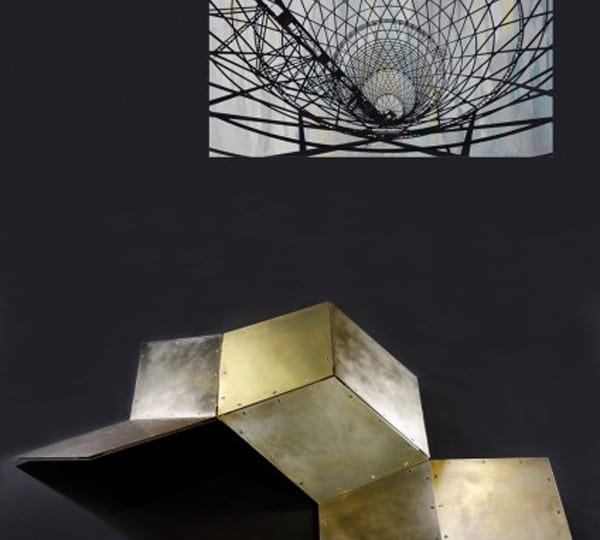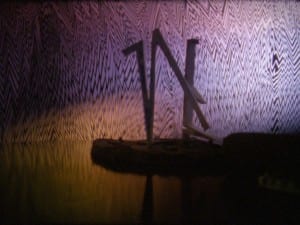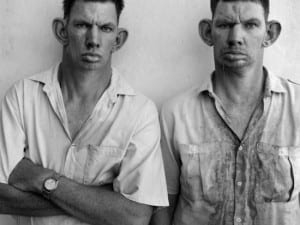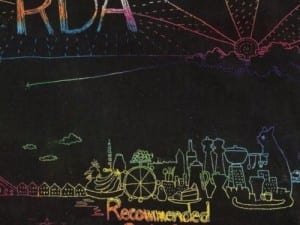Art14 London ran from 28 February until 2 March drawing in galleries and institutions from around the world to Olympia in Kensington. But, with so many art fairs saturating the art world every season, one may not be against harbouring an aversion to their overwhelming non-descript stature – however Art14 subtly offered something far more captivating.
Discovered amongst the multitude of works by emerging and mid-career artists, one would find works by those artists that have paved the way for them. Giants of the art world and art markets such as Josef Albers and Ai Wei Wei lurked unassumingly in their new environment, and what is most compelling about these juxtapositions is how well younger and lesser known artists’ works situate with them. Piano Nobile Gallery does just that in presenting a series of small matt grey sculptures by Natasha Peel. I like Anonymity and Anonymity likes me (2014) and Quantitative Uncertainty (2014) both have forms that, at first, delicately twist and snake elegantly, yet simultaneously the ascertainment of their solidity reaffirms the work as a far more violent affair; intense beauty is born from the destructive hands of a human being. Behind these and on a taller plinth a sculpture by the late Anthony Caro, Table Piece CLXIX (1973-4), exudes the same destructive properties. The immediacy between the works of the two artists is almost taboo – never would one expect to see such polarities of status hand in hand; yet here it is, and even more unfathomable is the fact that it works. As the gallery director stated, Natasha’s work “holds its own” amongst Caro’s legacy.
Art14 London also saw a large participating factor from Asia. Lin Hung-Hsin’s Skyline I (2013) depicts a cold concrete skyline with two skyscrapers looming into the centre of the canvas. About a third of the way down on each of the two skyscrapers an explosive blurring fractures the buildings. Hsin’s extraordinary control over his brush work gives these incidents the appearance of a violent optical allusion like that of a scene from a nightmare. Elsewhere, Chen Chieh-Jen’s Empire’s Borders II – Passage (2010) from his Happiness Series displays a decrepit building interior long forgotten. In the centre of the image is a Taiwanese emblem sporting red and white stripes and blue flag. The image, however, feels far more in tune with an installation shot of Mike Nelson’s work and has the frozen intensity and cinematic tendencies of Gregory Crewdson’s photography. Although the work itself is beautiful and captivating, there nevertheless seems to be something all the more larger missing from it all.
Rather than revealing new visions of what it is to be from and produce art in modern-day Asia, the viewer is subjected to something far more exposing: the impact of globalisation. With the ability to connect and observe every aspect of the globe from the comfort of a computer screen (as well as the unifying connectivity of mankind through social media), it would appear that the emerging artists of today are producing work that is grounded in everything anywhere. Hallmarks of different schools of thought and artistic tradition from around the world are blanketed by a universality. This has two key impacts. The first is that one can feel deflated by seeing work that is from 10,000 miles away or 10 miles away, produced by practitioners with massively opposing ways of life and history, which are indiscernible from one another. The second is that one may feel that we have reached a point now where there is going to be radical change in the way art is produced, sold and exhibited, with thanks to the internet. It’s conceivable that we are merely caught in a transition period, on the cusp of forthcoming innovations within the art world.
William Davie
Art14 London, 28 February – 2 March, Olympia Grand, London.
Credits
1. Scale No. 1 and No.2, 2008, Ai Wei Wei, Alexander Ochs Galleries Berlin/ Beijing & Private Collection.





